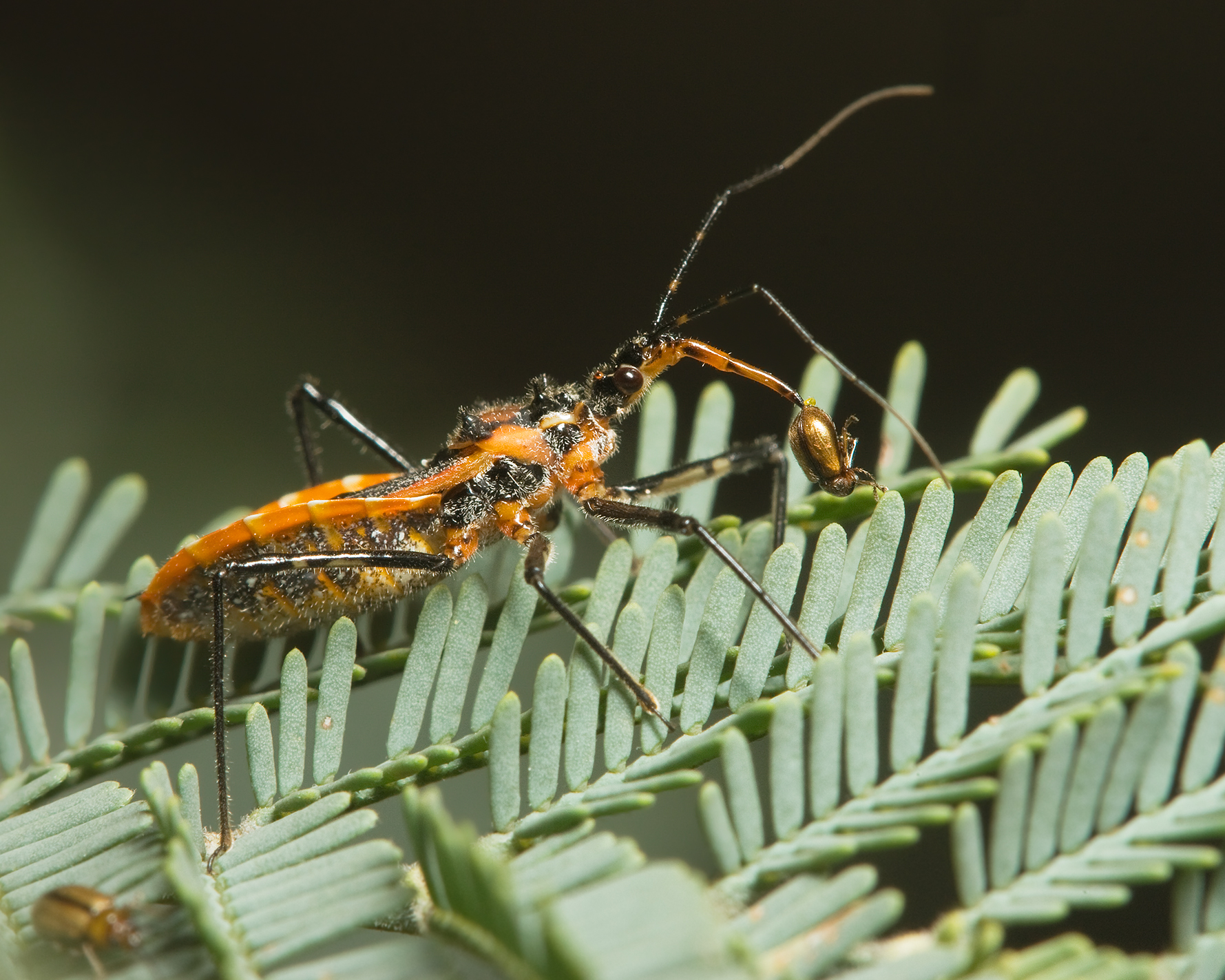|
Stenolemus Spiniventris
''Stenolemus spiniventris'' is a species of thread-legged bug in the family Reduviidae The Reduviidae is a large Cosmopolitan distribution, cosmopolitan family of the suborder Heteroptera of the Order (biology), order Hemiptera (true bugs). Among the Hemiptera and together with the Nabidae almost all species are terrestrial ambush .... It is found in Central America and North America. References Further reading * Reduviidae Articles created by Qbugbot Insects described in 1858 Hemiptera of North America Hemiptera of Central America {{Reduviidae-stub ... [...More Info...] [...Related Items...] OR: [Wikipedia] [Google] [Baidu] |
Thread-legged Bug
The Emesinae, or thread-legged bugs, are a subfamily of the Reduviidae (i.e., assassin bugs). They are conspicuously different from the other reduviids by their very slender body form. They are stalking, predatory insects that can be collected on palm fronds, cliffs, spider webbing, or near lights at night (many can be collected by blacklight). They walk on their mid and hind legs; the front pair is raptorial. Some groups specialize on spiders. Very little is known about emesines except that many species are found in the tropics. Pedro Wygodzinsky wrote the most recent revision of this group. Biogeography The Emesinae are cosmopolitan in distribution; however, they are most abundant in the tropics. For example, the tribe Metapterini, while having a worldwide distribution, has the majority of its diversity confined to tropical islands. The center of emesine diversity is apparently Africa. This continent contains the only species of the most plesiomorphic tribe, the Collartidini, w ... [...More Info...] [...Related Items...] OR: [Wikipedia] [Google] [Baidu] |
Reduviidae
The Reduviidae is a large Cosmopolitan distribution, cosmopolitan family of the suborder Heteroptera of the Order (biology), order Hemiptera (true bugs). Among the Hemiptera and together with the Nabidae almost all species are terrestrial ambush predators; most other predatory Hemiptera are aquatic. The main examples of non-predatory Reduviidae are some blood-sucking Parasitic nutrition#Ectoparasitism, ectoparasites in the subfamily Triatominae, with a few species from South America noted for their ability to transmit Chagas disease. Though spectacular exceptions are known, most members of the family are fairly easily recognizable: they have a relatively narrow neck, sturdy build, and formidable curved proboscis (sometimes called a Rostrum (anatomy), rostrum). Large specimens should be handled with caution, if at all, because they sometimes defend themselves with a very painful stab from the proboscis. Taxonomy The family members are almost all predatory, except for a few blood-su ... [...More Info...] [...Related Items...] OR: [Wikipedia] [Google] [Baidu] |
Articles Created By Qbugbot
Article often refers to: * Article (grammar) In grammar, an article is any member of a class of dedicated words that are used with noun phrases to mark the identifiability of the referents of the noun phrases. The category of articles constitutes a part of speech. In English language, Engl ..., a grammatical element used to indicate definiteness or indefiniteness * Article (publishing), a piece of nonfictional prose that is an independent part of a publication Article(s) may also refer to: Government and law * Elements of treaties of the European Union * Articles of association, the regulations governing a company, used in India, the UK and other countries; called articles of incorporation in the US * Articles of clerkship, the contract accepted to become an articled clerk * Articles of Confederation, the predecessor to the current United States Constitution * Article of impeachment, a formal document and charge used for impeachment in the United States * Article of m ... [...More Info...] [...Related Items...] OR: [Wikipedia] [Google] [Baidu] |
Insects Described In 1858
Insects (from Latin ') are Hexapoda, hexapod invertebrates of the class (biology), class Insecta. They are the largest group within the arthropod phylum. Insects have a chitinous exoskeleton, a three-part body (Insect morphology#Head, head, Thorax (insect anatomy), thorax and abdomen (insect anatomy), abdomen), three pairs of jointed Arthropod leg, legs, compound eyes, and a pair of antenna (biology), antennae. Insects are the most diverse group of animals, with more than a million described species; they represent more than half of all animal species. The insect nervous system consists of a insect brain, brain and a ventral nerve cord. Most insects reproduce Oviparous, by laying eggs. Insects Respiratory system of insects, breathe air through a system of Spiracle (arthropods), paired openings along their sides, connected to Trachea#Invertebrates, small tubes that take air directly to the tissues. The blood therefore does not carry oxygen; it is only partly contained in ves ... [...More Info...] [...Related Items...] OR: [Wikipedia] [Google] [Baidu] |
Hemiptera Of North America
Hemiptera (; ) is an order of insects, commonly called true bugs, comprising more than 80,000 species within groups such as the cicadas, aphids, planthoppers, leafhoppers, assassin bugs, bed bugs, and shield bugs. They range in size from to around , and share a common arrangement of piercing-sucking mouthparts. The name "true bugs" is sometimes limited to the suborder Heteroptera. Entomologists reserve the term ''bug'' for Hemiptera or Heteroptera,Gilbert Waldbauer. ''The Handy Bug Answer Book.'' Visible Ink, 1998p. 1. which does not include other arthropods or insects of other orders such as ants, bees, beetles, or butterflies. In some varieties of English, all terrestrial arthropods (including non-insect arachnids and myriapods) also fall under the colloquial understanding of ''bug''. Many insects with "bug" in their common name, especially in American English, belong to other orders; for example, the lovebug is a fly and the Maybug and ladybug are beetles. ... [...More Info...] [...Related Items...] OR: [Wikipedia] [Google] [Baidu] |



